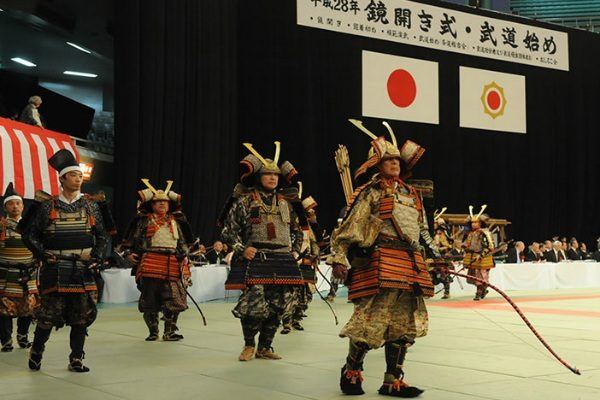Kagami biraki is a traditional Japanese ceremony to break the ornamental mochi and eat it for good health and fortune for the New Year.
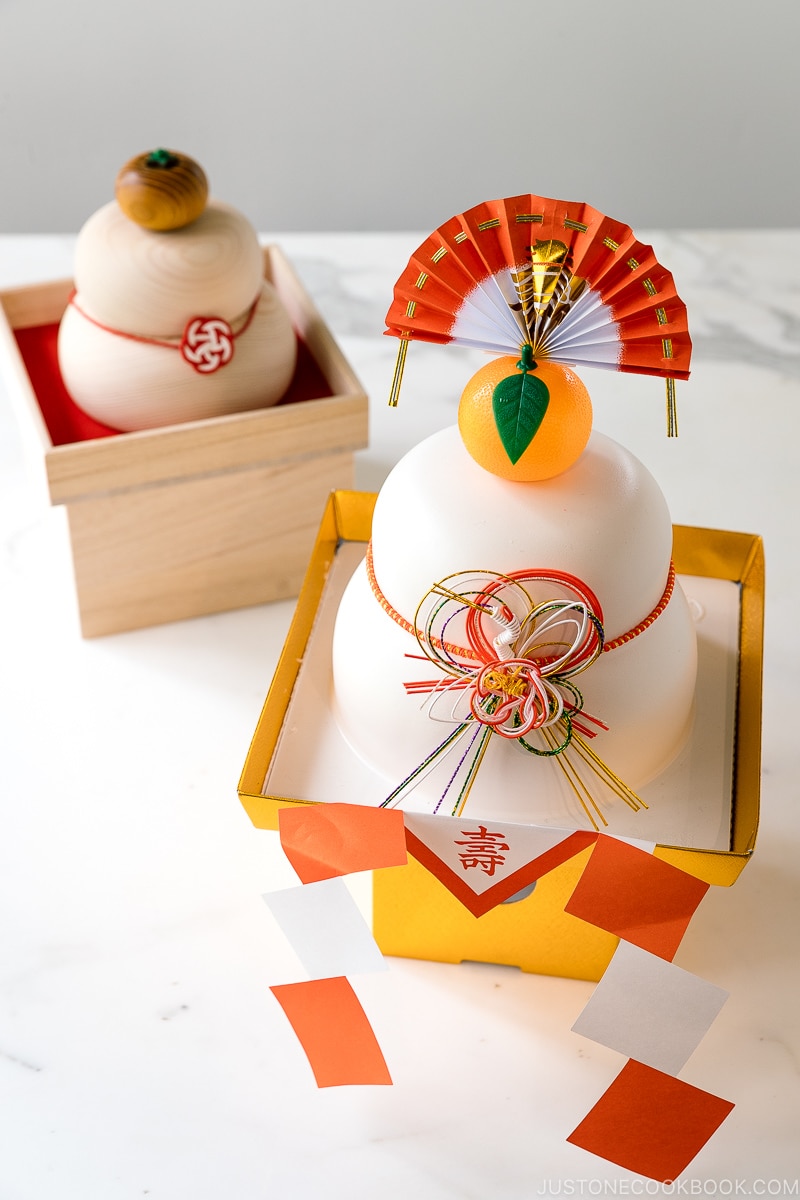
To conclude the Japanese New Year celebrations, kagami leave it (鏡開き), literally meaning ‘opening the mirror’ or breaking of the mochi, is typically held on January 11th.
What is Kagami Biraki?
Kagami biraki is a ceremony that marks significant events or transitions to new stages in life. It originated from an act performed by the fourth Tokugawa shogun 300 years ago when he broke a sake barrel on the eve of war upon achieving victory. This act gave rise to a new tradition, signifying the beginning of something new.
The term ‘kagami’ translates to ‘mirror,’ and ‘biraki’ means ‘opening’ or ‘to break.’ Why ‘mirror’? The name ‘kagami’ is derived from its resemblance to an old-fashioned round copper mirror, which also held religious significance according to Japanese mythology.
In modern-day Japan, kagami biraki is performed at weddings, sporting events, housewarmings, the opening days of new companies, and other celebratory occasions.
Kagami Biraki Celebration During the New Year
The most common kagami biraki celebration is held right after the start of the New Year and involves breaking the kagami mochi (鏡餅), a pair of decorated rice cakes offered to the deity of the New Year.
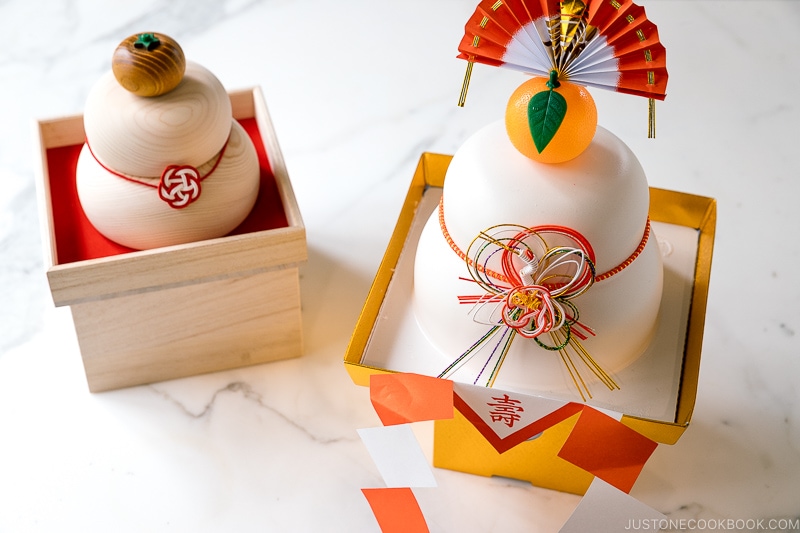
Originally, kagami biraki was celebrated on January 20th. However, with the death of the third Shogun, Iemitsu, in the Tokugawa shogunate on January 20, 1651, it was changed to the 11th, as odd numbers are considered auspicious in Japan.
There are slight regional variations in the date. In the western part of Japan, it’s celebrated on January 15th, while in Kyoto and the surrounding area, the tradition takes place on the 4th.
The ceremony involves removing the round-shaped mochi from the family altar and breaking them into smaller pieces before cooking them in dessert or soup to enjoy. Eating the mochi symbolizes a prayer for health and good fortune in the New Year.

Ancient people believed that food offered to God would possess special powers, and by consuming it with the blessings from God, they wished for good health.
Do and Don’ts of the Ceremony
To break open the ornamental mochi, one should never cut it with a knife. The action reminds the Japanese people of seppuku (切腹), ritual disembowelment from ancient times, and it is considered a sign of bad luck. For that reason, the customary way to break the mochi is with a wooden hammer or with one’s hands.
The words ‘call‘ (to cut) and ‘eight‘ (to break) carry connotations of bad fortune and mishap; therefore, ‘hiraku’ (open) — the original form of ‘Biraki’ — is used in the sense of the opening of new opportunities.
Different Styles of Kagami Mochi Decoration
Traditionally, mochi was made fresh at home, including kagami mochi, which consisted of two discs—one slightly larger than the other.
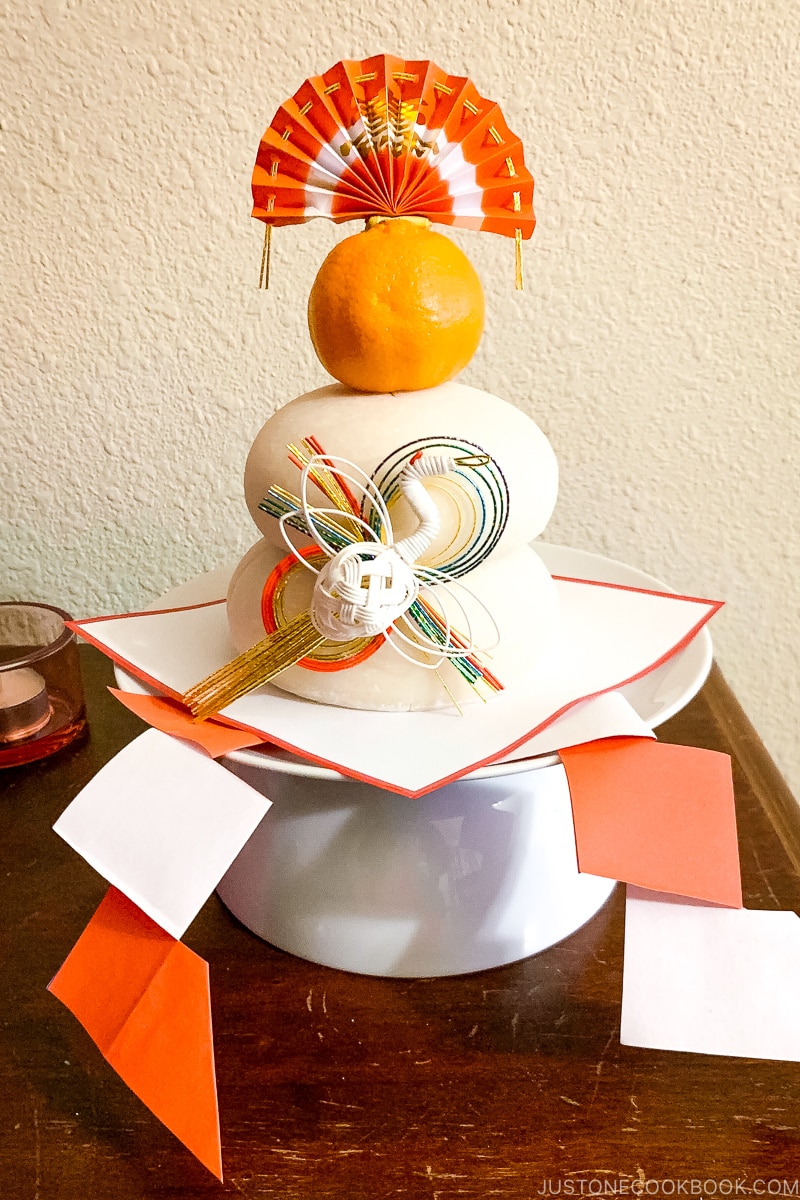
The mochi cakes are stacked on a decorated stand, adorned with an orange and a fan, and placed on the kamidana (a Shinto altar) or family altar. To maximize luck, some families even place small kagami mochi in each room of the house.
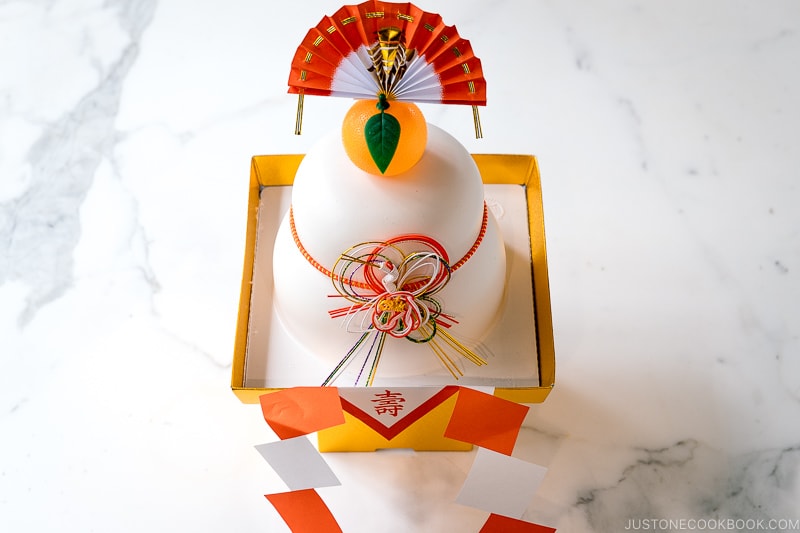
These days, most families buy plastic kagami mochi from grocery stores. Inside the kagami mochi mold, there are individually packaged small mochi pieces (we call this rectangular mochi kiri mochi) for convenience and better preservation.
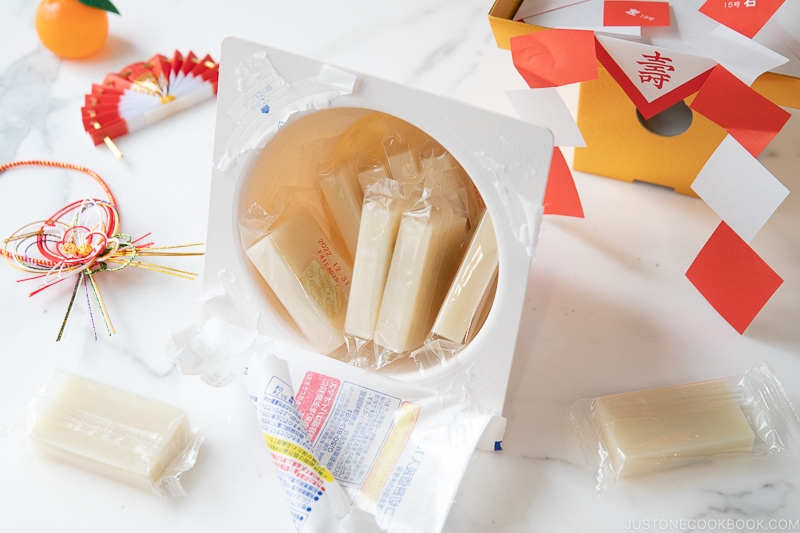
Where to Buy Kagami Mochi Decoration
As I mentioned earlier, kagami mochi decorations can be purchased at Japanese grocery stores in December. Since this is very specific to Japanese celebrations, it’s unlikely that general Asian grocery stores carry it. You may want to check Amazon to see if they offer it in December.
To reduce plastic usage, I purchased this hinoki kagami mochi decoration for this New Year.
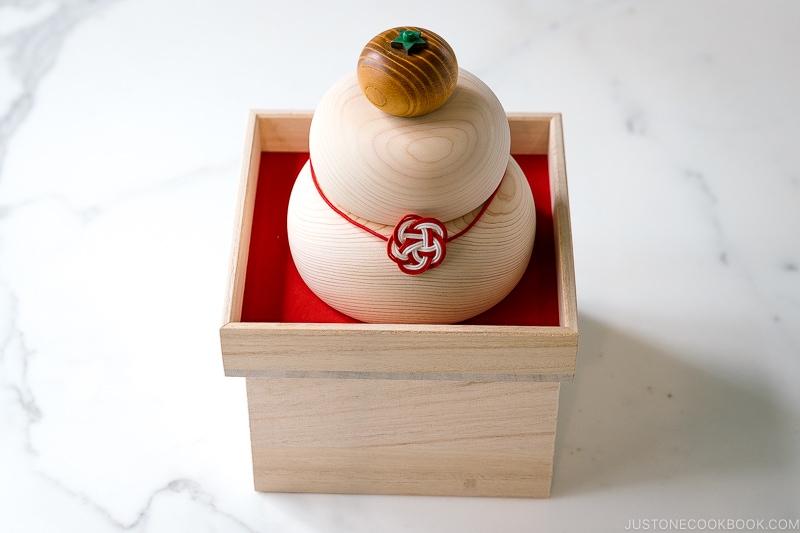
The best part is that you can store the decoration in one box.
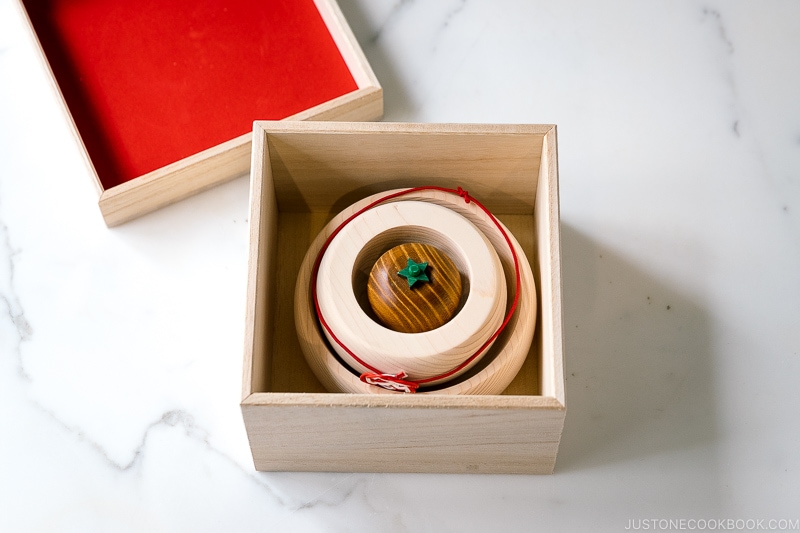
I like how simple and minimal this wooden kagami mochi looks. The store I purchased it from currently sold out of the product. If I find a new source, I’ll share the link in this post.
How Can We Use Kagami Mochi
After the ceremony, we will use the broken mochi pieces to make Zenzai (Red Bean Soup with Mochi), Chikara Udon (udon noodle soup with mochi), or include it in Ozone (New Year Soup).
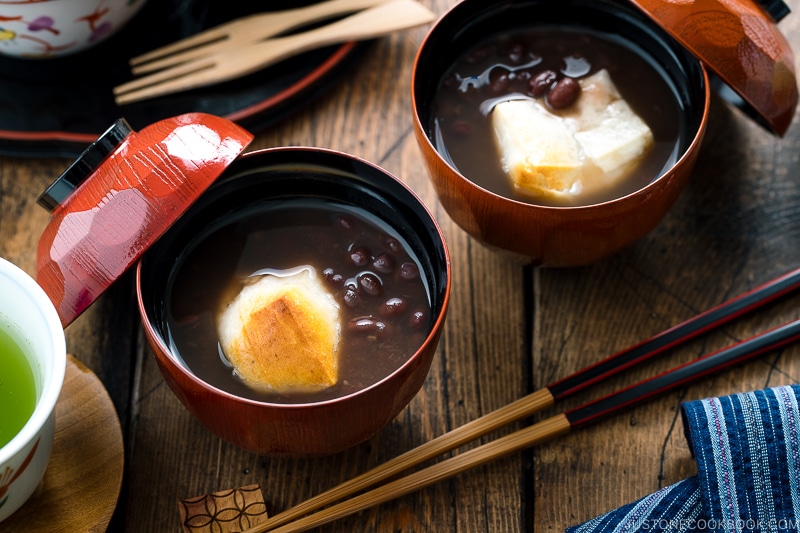
Red Bean Soup with Mochi (Zenzai / Oshiruko)
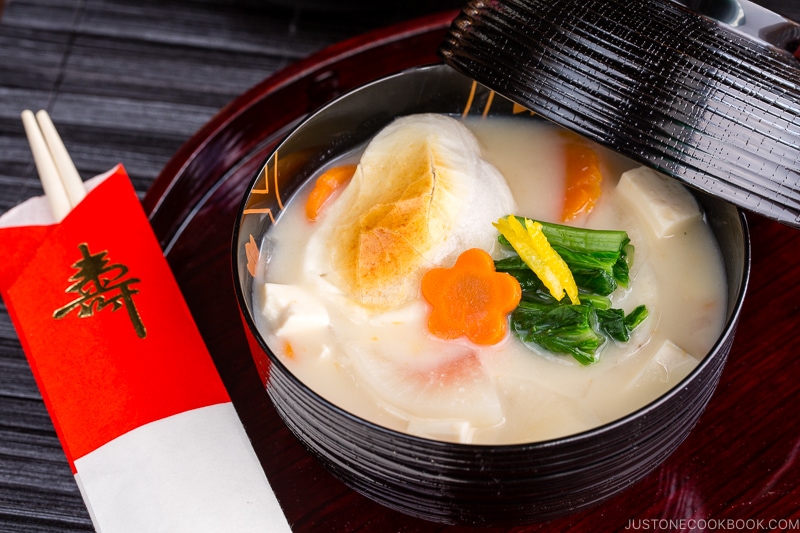
Kansai-style Ozoni (New Year Mochi Soup)
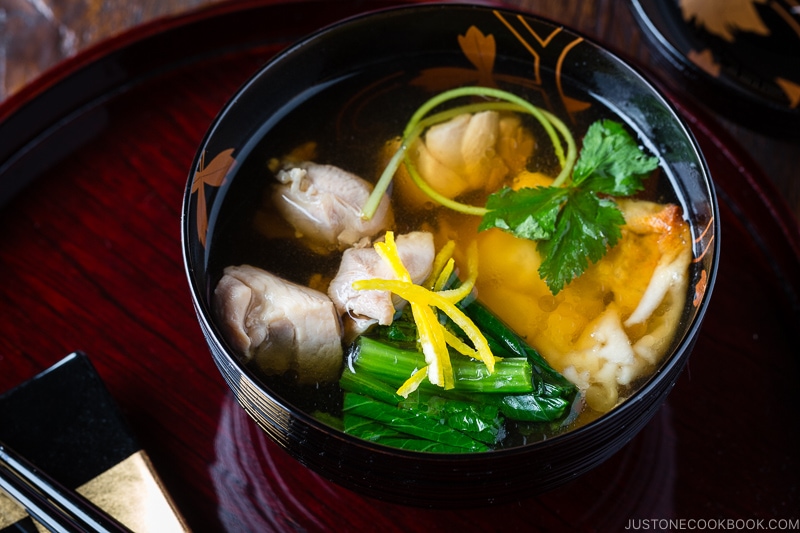
Kanto-style Ozoni (New Year Mochi Soup)
If you are tired of eating soups, try making rice cracker snacks!
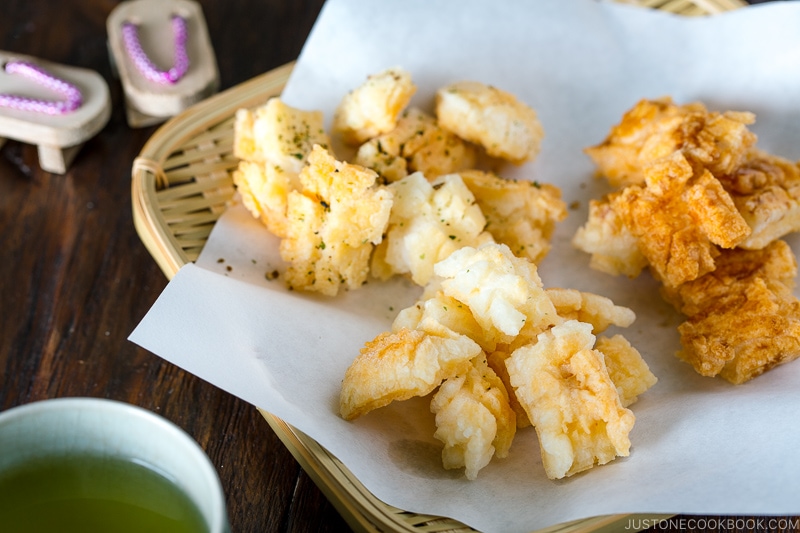
Other “Kagami Biraki” Celebrations
1. Kagami Biraki in Dojo and Other Sporting Events
The Kagami Biraki ceremony is also a significant event in many dojos (traditional martial art schools such as judo, karate, jujutsu, kendo, aikido, etc.) to kick off the dojo’s new year. The ceremony is usually held on the second Saturday or Sunday of January, so all students will be able to attend their first practice of the year. It marks a tradition of renewal, spirit, and devotion.
With the same vision in mind, many other sports communities in Japan also adopt the ceremony to mark a new season for their teams and to welcome new members.
2. The Other Kagami Biraki: Sake Barrel Ceremony
Another popular kagami biraki ceremony involves breaking the lid of sake barrel using a wooden mallet, and the sake is served and partaken by everyone present at the event. The act of ‘breaking open the lid’ of the sake barrel is similar to the act of breaking the mochi, and it represents an opening to harmony and good fortune.
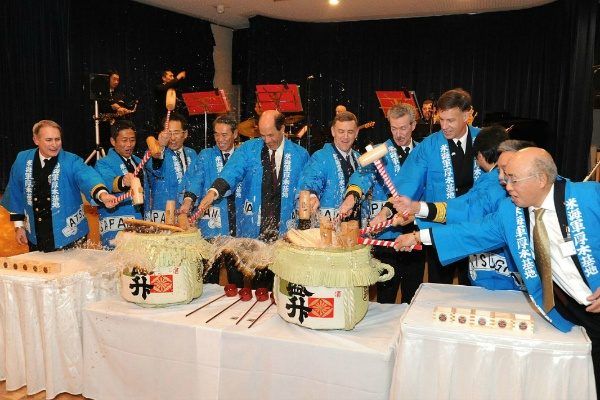
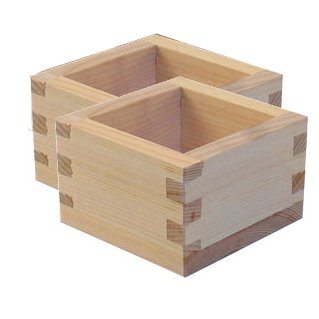
In the picture above, the lid of the sake is opened using a wooden mallet called kizuchi (mallet) and a wooden ladle hishaku (柄杓), is used to fill the square owners (升) cups with sake from the barrel.
At sake breweries, the lid of the sake barrel is called ‘kagami.’ This custom of opening the barrel is also referred to as kagami wari (mirror breaking) ‘mirror breaking’ or kagami nuki (mirror pulling) ‘mirror pulling,’ but kagami biraki is commonly used for happy occasions.
You will find this version of kagami biraki more common at weddings, business openings, project completion ceremonies, graduation parties, or other events likely to involve sake drinking.
More on Japanese Culture & Traditions
Wish to learn more about Japanese cooking? Sign up for our free newsletter to receive cooking tips & recipe updates! And stay in touch with me on Facebook, Pinterest, YouTubeand Instagram.
Editor’s Note: This post was originally published on January 10, 2017. It’s been republished on January 4, 2024.


